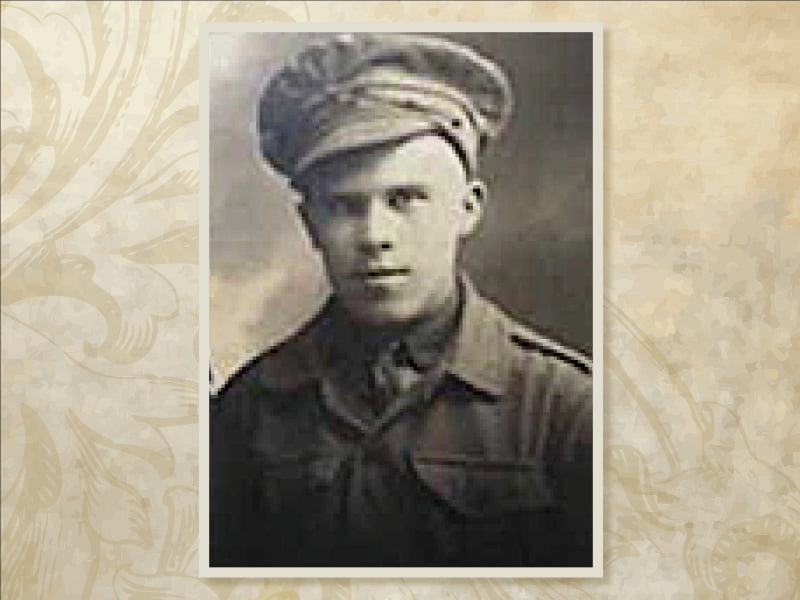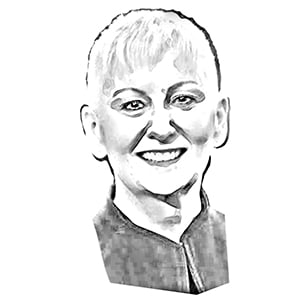The digitisation of records and archives plays a vital role in our democracy and history. Too often, ‘digital transformation’ is equated to MyGov, apps and the like: our mindset of digital transformation is far too narrow.
In reality, ‘digital transformation’ of the past has a far greater impact on our future and who we are as a people.
Both my husband Allan (an ex-RAAF officer) and I have relatives who served, several of who paid the ultimate sacrifice with their lives.
As we approach ANZAC Day, I thought I would bring attention to how digital technologies are helping us to discover their stories and how these technologies will preserve those stories for future generations.

The Australian and state governments have played a major role in this important work.
The National Archives of Australia (NAA) has scanned and digitally recorded all of the war service records for Australians who fought in the Great War, World War One.
The NAA is now in the process of scanning the one million records they hold documenting the service of Australian men and women in WW2.
The Australian Government funded this work with $10 million in April 2019 to enable completion within four years. Once scanned, they are available online for free.
Allan’s paternal grandfather, Ernest Henry Johnson, served in both WW1 and WW2. His horrific story and sacrifice was never really told.
Ernest’s scanned WW1 record was certainly not bland. It documented his joining as a 17-year-old to try and help feed his family as the man of the house. He was a boy soldier.
Ernest was charged with petty theft during training but was immediately discharged when it was discovered he was under-aged. But with the pressure to provide for his family, he joined again shortly afterwards.
There were no computers back then and teenagers shopped recruiting offices to find one that would accept them. The Lost Boys documents the tragedies that followed many of these under-aged recruits.
Ernest fought at Ypres and was gassed. When repatriated to England he appears to have ‘married’ a young Scottish woman but there is little information. After returning to Australia, he married an Australian girl but subsequently divorced.
Shell shock (now PTSD) and the effects of being gassed, led to the demon drink. He then married Allan’s grandmother and had 6 children.
Ernest signed up again and served with the Citizen Military Force (CMF) in Australia and was trained as a cook. He was discharged in early 1944 as a Lance Sergeant.
When Allan was a young boy, he had heard vague stories of Ernest (his Pop) serving on ships but none of this appeared in his war records.
But the NAA had also scanned a scrap of one of Ernest’s last will and testaments. Dated mid-1944 it said “I, Ernest Henry Johnson of the US Small Ships Section…”
Did Ernest have US war service?
We discovered an amazing group called the US Army Small Ships Association and they explained that the ‘US Small Ships’ was a volunteer group of boys too young and men too old to serve.
They were recruited by the US Army Transportation Corps to sail fishing trawlers and barges into hostile Japanese occupied PNG waters to deliver men and supplies. Many lost their lives; it was extraordinarily dangerous work. The Rag Tag Fleet tells their story.
The service of these brave sailors was not recognised until 2009! US Defense keeps excellent records and we were able to have Ernest discharged from the US Army and have applied for Ernest’s US Service Medals.
Imagine, almost 75 years after Ernest’s service ended, digital archives enabled Ernest’s service to be recognised and for him to be honourably discharged from service.
We have also applied to Australian Defence for posthumous issue of Ernest’s Australian service medals for his Small Ships service. All this from a scanned scrap of paper.
The information from the US Army listed the ships Ernest had served on. We were able to use this information to search the Royal Australian Navy’s website for the scanned WW2 Merchant Ship Records and work out exactly where Ernest had sailed.
Several other government-funded or operated websites and repositories were crucial to this search. Trove filled in many of the details of Ernest’s life with scanned newspaper articles.
NSW BDM digitally provided the information confirming that Ernest was born out of wedlock, that his father married Ernest’s mother the same year his first wife died and that Ernest had several stepsiblings.
Between Trove and NSW BDM Allan was able to flesh out his beloved grandfather’s life in considerable detail.
The digital technologies and online resources revealed other coincidental discoveries.
Allan’s own birth was registered by the then NSW BDM Registrar, a gentleman called Theodore le More Wells. Le More Wells was wounded several times in WW1 and was awarded the Military Cross for bravery.
Interestingly, whilst Registrar he centralised holding of all NSW birth records in Sydney and introduced photocopying of records – two great initiatives without a consulting firm in sight! His innovation led to Allan being able to discover his grandfather’s family history online.
We have used the times of Covid to research online the military histories of all of our relatives and ancestors. We found more who died because of their service. More teenagers trying to join their big brothers in the war. The tragic aftermath for their mothers, widows and children.
Their stories would have been lost to us if innovators like Theodore le More Wells and countless others who followed him hadn’t adopted digital technologies to capture and preserve these important records.
This time, government digital deserves a pat on the back.
Ernest’s story is no longer lost to the past but can be honoured in perpetuity. A young boy soldier, who fought in two world wars, served Australia and the United States, who was gassed and suffered for life.
The final step for us has been the gradual uploading of the stories and images we have discovered onto the Virtual War Memorial of Australia.
This preserves them for our grandchildren, for future generations and for researchers everywhere.
But most importantly it allows us all to remember and honour their sacrifice.
Lest We Forget.
Do you know more? Contact James Riley via Email.

